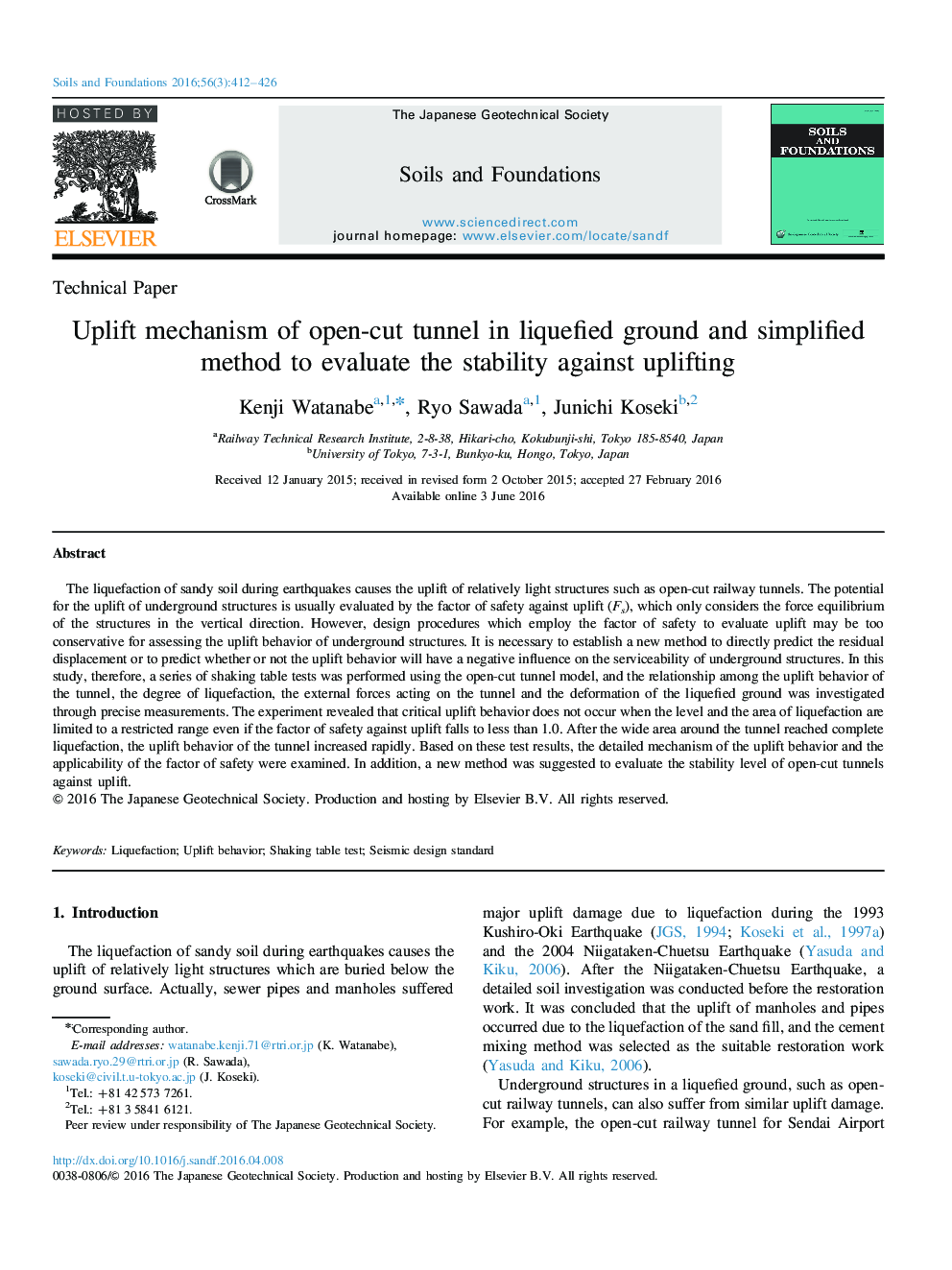| Article ID | Journal | Published Year | Pages | File Type |
|---|---|---|---|---|
| 306989 | Soils and Foundations | 2016 | 15 Pages |
Abstract
The liquefaction of sandy soil during earthquakes causes the uplift of relatively light structures such as open-cut railway tunnels. The potential for the uplift of underground structures is usually evaluated by the factor of safety against uplift (Fs), which only considers the force equilibrium of the structures in the vertical direction. However, design procedures which employ the factor of safety to evaluate uplift may be too conservative for assessing the uplift behavior of underground structures. It is necessary to establish a new method to directly predict the residual displacement or to predict whether or not the uplift behavior will have a negative influence on the serviceability of underground structures. In this study, therefore, a series of shaking table tests was performed using the open-cut tunnel model, and the relationship among the uplift behavior of the tunnel, the degree of liquefaction, the external forces acting on the tunnel and the deformation of the liquefied ground was investigated through precise measurements. The experiment revealed that critical uplift behavior does not occur when the level and the area of liquefaction are limited to a restricted range even if the factor of safety against uplift falls to less than 1.0. After the wide area around the tunnel reached complete liquefaction, the uplift behavior of the tunnel increased rapidly. Based on these test results, the detailed mechanism of the uplift behavior and the applicability of the factor of safety were examined. In addition, a new method was suggested to evaluate the stability level of open-cut tunnels against uplift.
Keywords
Related Topics
Physical Sciences and Engineering
Earth and Planetary Sciences
Geotechnical Engineering and Engineering Geology
Authors
Kenji Watanabe, Ryo Sawada, Junichi Koseki,
